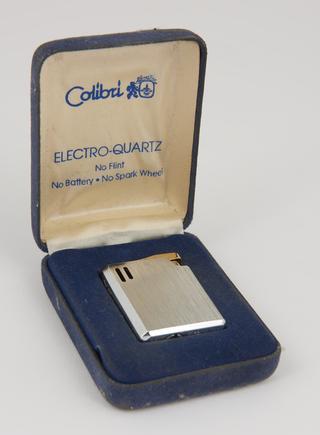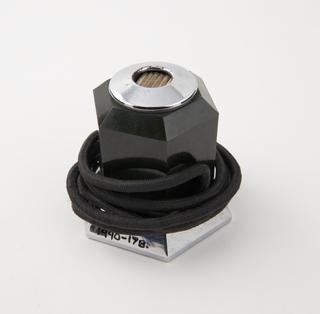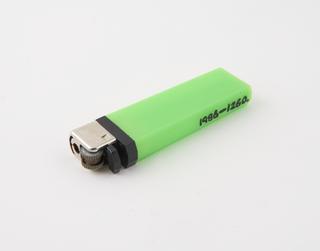Flint from Vlora, Albania
- Made:
- Albania

Worked flint, one of a group, rectangular, finely chipped all over the surface, with a sharp striking edge all round, partly enclosed in an ornamental sheath of thin cast lead, probably to prevent wear to the pocket or pouch, from Vlora, formerly recorded as Valona, Albania
Humans have throughout history used different techniques and tools to create life-sustaining fires. One of the oldest and most widespread methods is by using tinder, flint, and steel. Sharp-edged flints like this one are struck against a fire striker of mineral or fire-steel, which causes hot, oxidising metal particles to split off the fire striker and ignite tinder. Tinder is a fine material with the ability to combust quickly and often consists of amadou made from fungus, plant fibres, or artificial materials like paper strips and petroleum.
This flint is part of the Bryant and May fire-making collection, which used to be displayed in a private museum within the Bryant and May match-making factory’s offices. The collection comprises around 1200 objects, dating from the Stone Age to the early 20th century that illustrate the variety of tools and techniques humans across the world have used to create fires.
The collection was mostly acquired by the ornithologist and fire-making enthusiast Edward Bidwell and cared for by the collector Miller Christy. Bidwell collected between the late 19th and early 20th century – when Britain's colonial power was at its peak. Tracing the objects’ provenance is therefore difficult and part of the long and problematic history of colonial exploitation.




